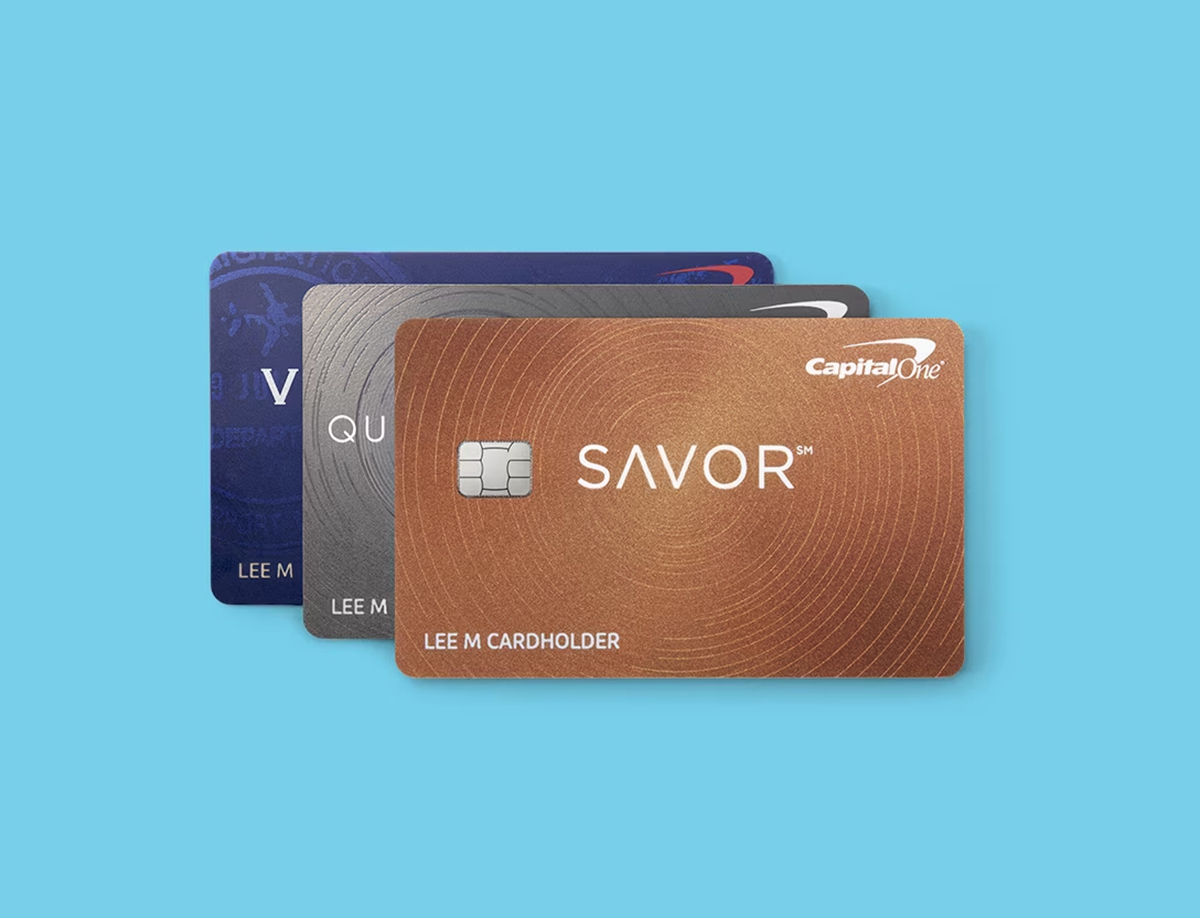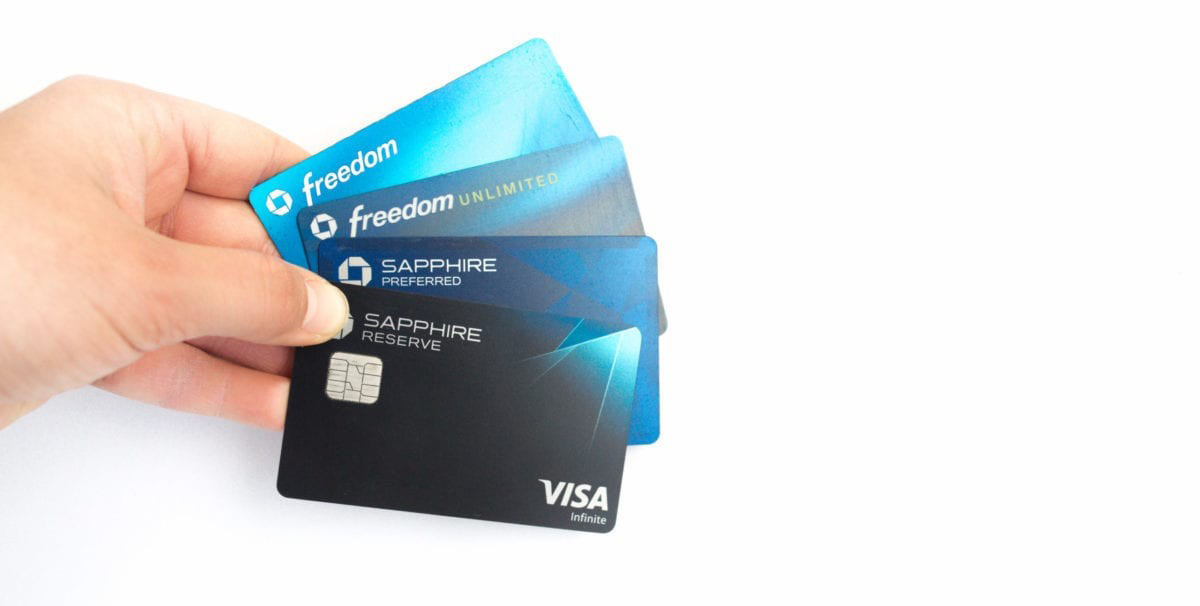

Finance
How To Transfer Credit Card Balance Chase
Modified: December 29, 2023
Learn how to transfer your credit card balance with Chase and manage your finances effectively.
(Many of the links in this article redirect to a specific reviewed product. Your purchase of these products through affiliate links helps to generate commission for LiveWell, at no extra cost. Learn more)
Table of Contents
- Introduction
- Understanding Credit Card Balance Transfers
- Benefits of Transferring Credit Card Balances with Chase
- Eligibility Requirements for Transferring Credit Card Balances with Chase
- How to Initiate a Credit Card Balance Transfer with Chase
- Tips for a Successful Credit Card Balance Transfer with Chase
- Potential Drawbacks of Transferring Credit Card Balances with Chase
- Alternatives to Transferring Credit Card Balances with Chase
- Conclusion
Introduction
Transferring credit card balances can be a strategic move to manage your finances and reduce the burden of high-interest debt. For those looking to transfer their credit card balance, Chase offers a range of options to help you consolidate your debt and save money over time.
In this article, we will explore the process of transferring credit card balances with Chase, including the benefits, eligibility requirements, and steps involved. Whether you are looking to take advantage of a promotional interest rate or simplify your monthly payments, Chase provides a convenient and reliable solution.
Understanding how credit card balance transfers work is essential before diving into the specifics. When you transfer a credit card balance, you essentially move the existing debt from one credit card to another. The goal is to secure a lower interest rate or benefit from a promotional period with little to no interest.
Chase, as a well-established financial institution, offers various incentives to attract customers to transfer their credit card balances to their accounts. By doing so, you can take advantage of competitive interest rates and potentially save money on interest payments.
If you find yourself struggling to make progress on your credit card debt or simply want to explore better options, transferring your credit card balance to a Chase credit card might be the solution you’ve been looking for. Let’s dive deeper into the benefits of transferring credit card balances with Chase.
Understanding Credit Card Balance Transfers
A credit card balance transfer involves moving your existing credit card debt from one card to another, typically with the goal of obtaining a lower interest rate or taking advantage of a promotional offer. This process allows you to consolidate your debt into a single account, making it easier to manage and potentially saving you money on interest charges.
When you transfer your credit card balance, the old card’s debt is paid off by the new card, and you begin making payments to the new card issuer. This can be an effective strategy to pay off your debt more efficiently, as you can take advantage of lower interest rates or even 0% introductory APRs offered by some credit card issuers for balance transfers.
It’s important to note that balance transfers usually come with certain fees, such as balance transfer fees and annual fees. The balance transfer fee is typically a percentage of the amount being transferred, while annual fees vary depending on the credit card issuer and specific card terms. However, these fees might still be worth it if the potential interest savings outweigh the costs.
One key benefit of credit card balance transfers is the opportunity to consolidate your debt into a single payment. This can simplify your financial management and make it easier to track your progress in paying off your debt. Instead of juggling multiple credit card payments, you only need to focus on making payments to one issuer.
Balance transfers also provide the opportunity to save money by reducing the amount of interest paid over time. For example, if you have a significant amount of credit card debt with a high-interest rate, transferring that balance to a card with a lower interest rate can result in substantial savings in interest charges.
When considering a credit card balance transfer, it’s important to carefully review the terms and conditions of the new card. Look for factors such as the length of any promotional interest rates, any fees associated with the transfer, and any potential impact on your credit score. Understanding these details will help you make an informed decision and select the best option for your financial situation.
Now that we’ve covered the basics of credit card balance transfers, let’s explore the specific benefits of transferring your credit card balances with Chase.
Benefits of Transferring Credit Card Balances with Chase
Transferring your credit card balance to Chase offers several advantages that can help you effectively manage your debt and save money. Here are some key benefits of choosing Chase for your credit card balance transfer:
- Competitive Interest Rates: Chase credit cards often come with competitive interest rates, which can help you save money on interest charges over time. By transferring your balance to a lower interest rate card, you can reduce the overall cost of your debt.
- Promotional Offers: Chase frequently offers promotional balance transfer offers, such as 0% introductory APRs for a certain period. This gives you the opportunity to pay off your debt without incurring any additional interest during the promotional period, allowing you to make significant progress in reducing your balance.
- Consolidation of Debt: By transferring your credit card balances to Chase, you can consolidate multiple debts into a single card. This simplifies your financial management by having only one payment to make each month, making it easier to track your progress and stay organized.
- Rewards and Benefits: Many Chase credit cards offer rewards programs, allowing you to earn cash back, travel points, or other benefits when making purchases. By transferring your balance to a rewards card, you can continue to earn rewards while paying down your debt.
- Convenience and Access: Chase is a well-established financial institution with a robust online banking system and a wide network of ATMs. Transferring your balance to Chase allows you to conveniently manage your account, track your payments, and access your funds whenever you need them.
It’s important to note that the specific benefits you receive may vary depending on the specific Chase credit card you choose for your balance transfer. Be sure to carefully review the terms and conditions of each card to determine which one aligns best with your financial goals and circumstances.
Transferring your credit card balance to Chase can be a smart financial move that helps you save money on interest payments and simplify your debt management. However, it’s important to understand the eligibility requirements before initiating a transfer. Let’s explore the eligibility requirements for transferring credit card balances with Chase in the next section.
Eligibility Requirements for Transferring Credit Card Balances with Chase
Before you can transfer your credit card balance to Chase, there are certain eligibility requirements you must meet. These requirements ensure that you qualify for a balance transfer and can take advantage of the benefits and convenience that Chase offers. Here are the key eligibility criteria to consider:
- Adequate Credit Score: Chase typically requires a good to excellent credit score for balance transfer applications. While specific credit score requirements may vary depending on the card, a higher credit score demonstrates your ability to manage credit responsibly and increases your chances of being approved.
- Sufficient Available Credit: To complete a balance transfer, you must have enough available credit on your Chase credit card or credit line to accommodate the transfer. The available credit is the difference between your credit limit and your current balance.
- Existing Chase Credit Card: In most cases, you must have an existing Chase credit card to initiate a balance transfer with Chase. If you don’t have a Chase credit card, you may need to open one before transferring your balances.
- Transferrable Source of Debt: Chase usually allows balance transfers from other credit cards, store cards, and certain types of loans. However, not all debts are eligible for transfer. It’s essential to check if your particular debt can be transferred to Chase before initiating the process.
- Meeting Chase’s Internal Requirements: In addition to the general eligibility criteria, Chase may have its own internal requirements. These requirements may include factors such as maintaining a good relationship with the bank, regular account activity, and adherence to their terms and conditions.
It’s worth noting that meeting the eligibility requirements does not guarantee approval for a balance transfer. Chase will evaluate your application based on various factors, including your creditworthiness and their internal risk assessment. Having a strong credit history and a good relationship with Chase can increase your chances of being approved for a balance transfer.
If you meet the eligibility requirements and are ready to transfer your credit card balances with Chase, it’s important to understand the process and steps involved. We’ll explore how to initiate a credit card balance transfer with Chase in the next section.
How to Initiate a Credit Card Balance Transfer with Chase
Initiating a credit card balance transfer with Chase is a straightforward process that can be done online or over the phone. To get started, follow these steps:
- Check Credit Card Offers: Visit the Chase website or contact their customer service to explore the credit card offers available for balance transfers. Compare the different cards and their features, including interest rates, promotional offers, and fees.
- Select the Appropriate Card: Choose the Chase credit card that best aligns with your financial goals and needs. Consider factors such as the length of any promotional rates, ongoing interest rates, and rewards or benefits offered.
- Apply for the Card: Once you have selected a card, you will need to apply for the credit card. You can do this online by filling out the application form or by calling Chase’s customer service and applying over the phone. Provide the necessary personal and financial information for the application process.
- Indicate Your Balance Transfer Request: During the application process, you will have the opportunity to indicate that you want to transfer a balance from another credit card. Make sure to provide accurate information about the amount you want to transfer.
- Wait for Approval: After submitting your credit card application, you will need to wait for Chase to review and approve your request. The approval process typically takes a few business days, and you may receive an email or notification with the decision.
- Provide Transfer Details: Once your application is approved, you will need to provide the necessary details of the credit card account you want to transfer the balance from. This includes the account number, the name of the credit card issuer, and the balance you wish to transfer.
- Review and Confirm the Transfer: Carefully review the details of the balance transfer before confirming. Ensure that all the information is accurate and that you understand any associated fees or terms. Once you are satisfied, confirm the balance transfer request.
- Monitor the Transfer: After initiating the balance transfer, monitor your Chase account to ensure that the funds are transferred successfully and applied to the appropriate credit card account. Be mindful of any promotional periods, as well as any fees or interest rates associated with the transfer.
Remember to continue making payments on your old credit card until the transfer is complete. Once the transfer is confirmed and the funds are applied to your new Chase credit card, you can begin making payments to Chase to pay down the transferred balance.
It’s essential to carefully follow the steps and provide accurate information during the balance transfer process to ensure a smooth and successful transfer. Now that you know how to initiate a credit card balance transfer with Chase, let’s explore some tips for a successful transfer in the next section.
Tips for a Successful Credit Card Balance Transfer with Chase
Transferring your credit card balance to Chase can be a beneficial financial move, but it’s essential to follow some tips to ensure a successful experience. Here are some important tips to keep in mind:
- Compare and Choose Wisely: Carefully compare the different Chase credit card offers, including interest rates, promotional periods, fees, and rewards. Choose the card that best suits your needs and financial goals.
- Read and Understand the Terms and Conditions: Take the time to read and fully understand the terms and conditions of the credit card you are considering. Pay attention to interest rates, balance transfer fees, and any promotional offers. Understanding the details will help you make informed decisions and avoid surprises.
- Check Your Credit Score: A good credit score is often required for a successful balance transfer. Before applying, check your credit score to ensure it meets the eligibility criteria. If your credit score is lower than expected, focus on improving it before attempting a balance transfer.
- Pay Attention to Promotional Periods: If your chosen Chase credit card offers a promotional period with 0% APR, make sure you understand the duration and any requirements to qualify. Calculate how much you need to pay each month to clear the transferred balance before the regular interest rate kicks in.
- Take Advantage of Rewards Programs: If your Chase credit card offers rewards or cashback, understand how these programs work and how you can maximize your benefits. Utilize your card for everyday expenses and pay off the balance in full each month to make the most of the rewards program.
- Make Consistent Payments: To make progress in paying off your transferred balance, be diligent about making consistent payments each month. Late or missed payments could result in penalty fees and potentially void any promotional offers.
- Avoid New Charges on the New Card: While you may have a balance transfer limit, it is best to avoid adding new charges to the card you used for the balance transfer. Focus on paying off the transferred balance before making new purchases on the card.
- Keep an Eye on Fees: Be mindful of any fees associated with your Chase credit card, such as annual fees or balance transfer fees. Evaluate whether the benefits and savings outweigh these costs and consider switching to a different card if necessary.
- Review Your Statements: Regularly review your credit card statements to ensure that the balance transfer has been properly processed and that there are no unexpected charges or fees. Address any issues promptly by contacting Chase’s customer service.
- Stay Organized: Keep track of your balance transfer details, including the original credit card account information, transferred amount, and the promotional period end date. Stay organized to avoid confusion and maximize the benefits of the transfer.
By following these tips, you can have a successful credit card balance transfer experience with Chase. Remember, responsible financial management and consistent payments are key to reducing your debt and achieving your financial goals. Now, let’s discuss some potential drawbacks of transferring credit card balances with Chase.
Potential Drawbacks of Transferring Credit Card Balances with Chase
While transferring your credit card balances to Chase can offer many benefits, it’s important to consider potential drawbacks before making a decision. Here are some potential drawbacks to be aware of:
- Balance Transfer Fees: Chase may charge a balance transfer fee, which is typically a percentage of the amount being transferred. While this fee may be worth it if the interest savings outweigh the cost, it’s important to factor in this additional expense when evaluating the overall benefit of the balance transfer.
- Impact on Credit Score: Applying for a new credit card and transferring balances can have a temporary impact on your credit score. The credit inquiry during the application process and the opening of a new account may result in a slight decrease in your credit score. However, if you make consistent payments and manage your new credit card responsibly, your credit score can recover and potentially improve over time.
- Loss of Promotional Rates: If you don’t pay off the transferred balance within the promotional period, the interest rate will revert to the regular rate set by Chase. Be mindful of this timeline and ensure that you can meet the required payments to avoid accruing additional interest charges.
- Additional Purchases: Transferring your balance to a new Chase credit card does not eliminate the temptation to make new purchases. It’s important to exercise discipline and avoid adding new charges to the card, as these may accrue interest at the regular rate and potentially hinder your progress in paying off the transferred balance.
- Limited Transfer Amount: Chase may impose limits on the amount of debt you can transfer to their credit cards. If your outstanding balances exceed the limit, you may not be able to transfer your entire debt, which can impact your consolidation efforts.
- Closing Old Credit Card Accounts: When transferring your balances, you may be tempted to close your old credit card accounts to avoid any potential misuse. However, closing old accounts can potentially lower your average credit age and impact your credit score. It’s often recommended to keep old accounts open, especially if they have positive payment history and low or no annual fees.
- Ongoing Interest Rates: While Chase may offer competitive interest rates on their credit cards, the ongoing interest rate after any promotional period ends may still be higher than what you could find elsewhere. It’s important to consider the long-term cost of keeping your balances with Chase and compare it with other options available to you.
It’s crucial to carefully weigh these potential drawbacks against the benefits before making a decision. Consider your financial goals, credit management habits, and the specific terms and conditions of the Chase credit card you are considering for your balance transfer.
Although there are potential drawbacks, for many individuals, the benefits of transferring credit card balances with Chase outweigh the disadvantages. However, it’s important to be aware of them and make an informed decision that aligns with your financial situation and goals.
Now, let’s look at some alternatives to transferring credit card balances with Chase for debt consolidation.
Alternatives to Transferring Credit Card Balances with Chase
While transferring credit card balances to Chase can be a viable solution for consolidating debt, there are alternative options worth considering. These alternatives may offer different advantages or better suit your specific financial circumstances. Here are a few alternatives to balance transfers with Chase:
- Personal Loans: Applying for a personal loan from a bank or credit union can provide you with a lump sum of money to pay off your credit card debt. Personal loans often offer fixed interest rates and predictable monthly payments, allowing you to create a structured plan for debt repayment.
- Debt Management Plan: Enrolling in a debt management plan through a reputable credit counseling agency can help you consolidate your debts into a single monthly payment. With a debt management plan, you make monthly payments to the credit counseling agency, who then distributes the funds to your creditors. This option can also provide you with personalized financial guidance and assistance.
- Home Equity Line of Credit (HELOC): If you own a home, you may be eligible for a home equity line of credit (HELOC). This option allows you to borrow against the equity in your home and use the funds to pay off your credit card debts. HELOCs often have lower interest rates compared to credit cards, but it’s important to consider the potential risk of using your home as collateral.
- Snowball or Avalanche Method: If you have multiple credit cards with balances, consider using either the snowball or avalanche method to pay off your debts. With the snowball method, you prioritize paying off the smallest balances first, while with the avalanche method, you tackle the highest interest debts first. Both methods can help you build momentum and make progress in paying off your debts.
- Negotiate with Credit Card Issuers: In some cases, you may be able to negotiate directly with your credit card issuers to lower interest rates or work out a repayment plan. Contact your credit card companies to discuss options and see if they can offer any hardship programs or reduced interest rates.
Each alternative has its own advantages and considerations, so it’s important to carefully evaluate which option aligns best with your financial goals and resources. Consider factors such as interest rates, fees, repayment terms, and the impact on your credit score. Consulting with a financial advisor can also provide valuable guidance in selecting the best alternative for your specific situation.
Remember, regardless of the method you choose, it’s important to address the root causes of your debt and develop healthy financial habits to avoid falling back into debt in the future. Minimize unnecessary spending, create a budget, and explore strategies for building an emergency fund to secure your financial stability.
Now, let’s conclude our discussion on credit card balance transfers with Chase.
Conclusion
Transferring credit card balances with Chase can be a valuable strategy to manage your debt and save money on interest payments. By taking advantage of their competitive interest rates, promotional offers, and convenience, you can consolidate your debts and streamline your financial management. However, it’s essential to consider both the benefits and potential drawbacks before making a decision.
Throughout this article, we explored the process of transferring credit card balances with Chase. We discussed the fundamentals of balance transfers, the benefits of choosing Chase, eligibility requirements, how to initiate a balance transfer, tips for a successful transfer, potential drawbacks, and alternative options to consider.
Remember to carefully compare credit card offers, read the terms and conditions, and evaluate your financial situation before initiating a balance transfer. Understand the impact on your credit score, the potential fees involved, and the importance of making consistent payments to reach your debt-reduction goals.
If you decide that transferring your credit card balances to Chase aligns with your financial goals, follow the steps outlined in this article to initiate the transfer and monitor the progress closely.
However, if you find that the alternatives mentioned in this article suit your situation better, such as personal loans, debt management plans, or other debt repayment methods, explore those options and seek professional advice if necessary.
Ultimately, the goal is to reduce your debt efficiently, improve your financial well-being, and adopt healthy financial habits for the long term.
Remember, managing your debt is just one aspect of your overall financial health. Be proactive in budgeting, saving, and making sound financial decisions to ensure a secure financial future.
We hope this article has provided you with valuable insights and guidance in understanding credit card balance transfers with Chase. Good luck as you embark on your journey towards financial freedom!














